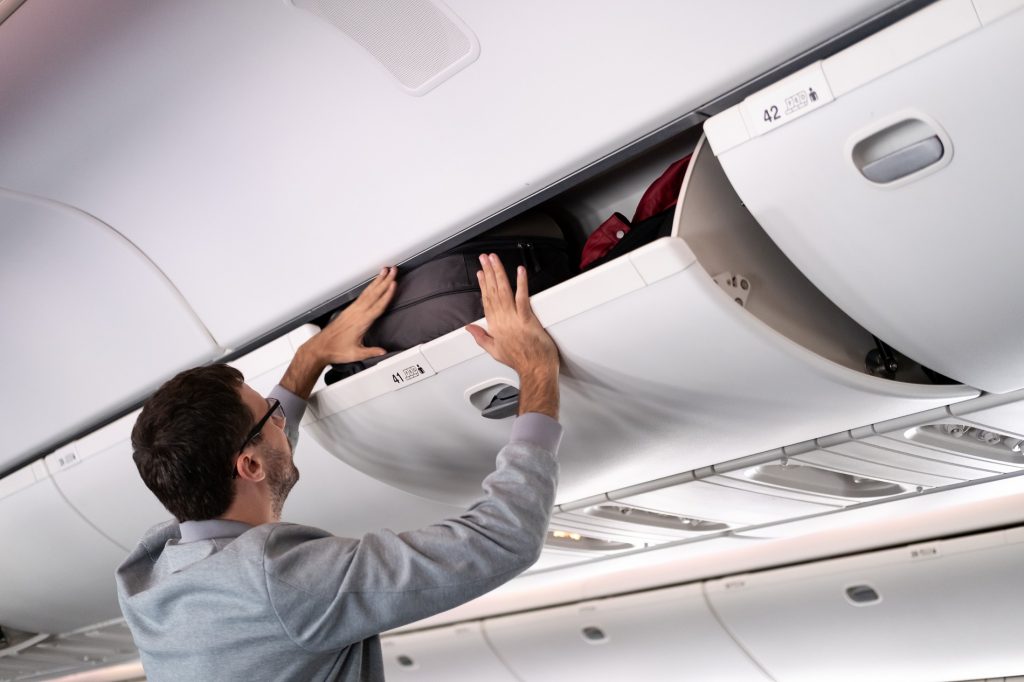It’s safe to say that airports aren’t usually our favorite places to be. They do, however, open up a world of possibilities. The trick is planning ahead to avoid the major stressors and navigate these bustling hubs with ease.
If you want to learn the top airport tips and make airport stress a thing of the past, keep reading. We’ll dive into preparations you can make before you even arrive at the airport, the best ways to handle check-in and security, and the answer to that age-old question: how early should you get to the airport?
What to Do Before You Arrive
Preparation starts long before you leave your house. Here are some must-remember tips, whether you’re a first-time flyer or a seasoned pro1:
- Know how to pack – The do’s and don’ts of packing for a flight could be its own college course – that’s where knowing the packing hacks can come in handy. But generally, you’ll want to pack as light as you can, keep your essentials in a carry-on bag, and familiarize yourself with the baggage weight and size limits. If you’re carrying on, keep liquids, laptops, and tablets in an easily accessible compartment. For those traveling with checked baggage, make sure your checked bag meets your airline’s requirements to avoid any surprises once you arrive at the airport.
- Organize your travel papers – Keep your ID cards or passport and boarding pass in one easy-to-reach (but hard-to-steal) spot. Refer to our international travel checklist to ensure you have all necessary documents if you’re flying across borders.
- Dress for security checkpoints – Avoid belts and other metal accessories, since you’ll have to take them off. Always wear shoes that are easy to slip on and off, too, since you’ll have to remove them when going through the body scanner.
- Familiarize yourself with airline rules – Each airline has its own rules about the number of bags you can check or carry on, weight limits of bags, and policies for missed or delayed flights.
Knowing what to expect in advance will keep you from scrambling at the last minute.
How Early Should I Get to the Airport?
Most airlines suggest that you arrive 3 hours before the scheduled departure time of an international flight and 2 hours before a domestic flight.2
Every travel day is different, so factor in extra time if you have to:
- Park
- Use parking lot shuttles or other transportation
- Check in at a kiosk or desk, rather than online
- Print your boarding pass
- Drop off your checked luggage
Everything takes longer in busy airports, where the volume of passengers can lead to longer security lines and wait times at customer service desks. So if you’re traveling during the busiest times of year – like the winter holidays – you may want to add even more time to your itinerary.
Regardless of the season, a larger airport size can also impact your ability to move quickly from one point to another. It may require more time to get from the check-in area to your boarding gate, especially if you need to take internal transit systems or walk long distances within the airport terminal.
Lastly, unexpected delays in security or baggage check areas can eat into your buffer period, leaving you rushing to catch your flight. For these reasons, it’s always best to show up earlier rather than later.
Speeding Up the Process with Airport Technology
These days, many airports have automated self-check-in kiosks. You can print out your own boarding pass and weigh and tag your own luggage rather than waiting in an extra line. Many airlines also offer online check-in options, allowing you to skip the check-in line entirely if you’re carrying on.
If you’re traveling abroad and won’t always have WiFi, purchasing an eSIM card will allow you to check in on your phone from anywhere and save you the extra headache and time at the airport. Plus, a downloadable eSIM is one less physical item to keep track of when you’re speeding through security checkpoints.
Tips for Handling TSA Security Checkpoints
TSA security checkpoints can feel intimidating, especially if you’re not a regular traveler. Fortunately, the TSA itself has several tips to help travelers get through an airport security check as quickly and easily as possible.3
Only Bring Allowable Items
Some items are completely prohibited, like weapons or items that could be used as a weapon. Others are allowed in checked luggage, but not carry-ons, like liquids over 100 mL (3.4oz) or spare lithium-ion batteries.
To avoid an ordeal at security, review the do’s and don’ts before you leave and pack your bags accordingly.
Dress for Success
Wear comfortable clothing that isn’t too baggy, and outer layers that are easy to remove. You’ll need to take off any jackets, sweaters, and bulky coats, along with your shoes, belts, and any metal accessories. The more of these items you have, the more it will slow you down.
Pack Your Carry-On Strategically
Your carry-on should be packed with flying essentials that you can access easily during your flight. You’ll need to remove electronics from your bag, so make sure they’re all in one place and that you can shuffle them in and out of your bag with ease.
It helps to know what types of electronics you’ll need to remove, too. These include:
- Handheld devices that are larger than your average phone
- Tablets
- E-readers
- Handheld gaming devices
- Laptops
On the other hand, you don’t typically need to remove:
- Chargers and charging cables
- Uninstalled batteries (like A, AA, AAA, D, or C)
- SIM cards that aren’t currently installed in your phone
Apply for TSA Precheck
TSA Precheck lets you use a special, separate security line. Its expedited rules allow you through without taking off your shoes or belts. You can keep your electronics in your bag, along with any liquids that fit security checkpoint standards.
You do have to apply and receive approval to utilize the benefits, and it does cost $78 for 5 years—but at $17 a year, that’s well worth it for many travelers.
Once you’re past airport security, you’re in the home stretch. After this point, you can leisurely grab snacks, peruse the airport shops, and take your time setting up at your boarding gate as you wait for your flight.
Enjoy the Fruits of Your Labor
Once you’ve done all this work preparing yourself for your time at the airport, you should find that it goes quite smoothly.
There are, of course, unforeseen circumstances that no one can fully account for. You might end up running into an unexpected crowd, your scheduled departure time could be delayed, or you could be randomly selected for an additional security screening at the TSA checkpoint. But if you recognize these possibilities, arrive with plenty of time to spare, and pack appropriately—from an eSIM card that keeps you connected to the proper sized liquid containers—you can avoid the worst-case scenario of missing your flight.
Sources:
- Nerdwallet. 7 Must-Know Tips for First-Time Flyers. https://www.nerdwallet.com/article/travel/what-every-first-time-flyer-needs-to-know
- The Points Guy. How early do you need to get to the airport? https://thepointsguy.com/guide/how-early-to-get-to-the-airport/
- TSA. TSA’s Top Travel Tips https://www.tsa.gov/travel/travel-tips





